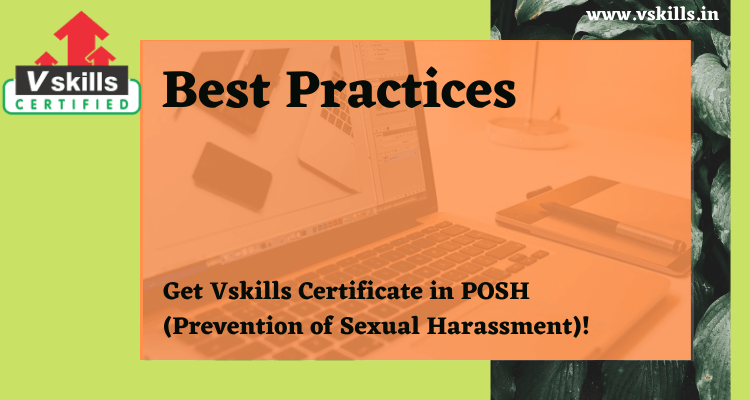
Best Practices– Ever since the PoSH Act came into existence, sexual harassment at the workplace is legally a crime. This much-needed legality was provided by The Ministry of Women and Child Development through the ‘Sexual Harassment of Women at Workplace (Prevention, Prohibition and Redressal) Act 2013’.
The growing numbers of female employees in the workforce, increasing diversity, the shift towards a less formal work environment, and ubiquitous technology have only reinforced the required change.
Some of the best practices from various organizations are listed.
Prevention of Sexual Harassment (SH) Awareness & Training
- Using regional languages – SH Awareness training is provided in the regional language especially to the lesser educated employees (eg. contract staff) to ensure they understand its importance.
- Well accepted movies like ‘PINK’ which revolves around SH are used in training.
- Theatre based role-plays – Scripted role-plays are enacted by employees of an MNC consulting firm for the audience to identify the do’s and don’ts of SH.
- Roadshows – Roadshows around PoSH are conducted. They include games, plays, quizzes, and panel discussions by subject matter experts.
- Competitions – A top IT firm creates company-wide competitions for the best video entry themed around PoSH. The winning video gets awarded and is included in the company’s training repository.
- Books – Providing books like ‘BCC: Behind Closed Cubicles’ for managers to read helps them understand true ground realities.
- Sharing lessons learned – Some companies share with all its employees, a gist of the lessons learned from the SH incidents.
- Unconscious Bias – Managers are trained to watch out for ‘unconscious bias’ in their daily work life to build a more inclusive workplace.
Understanding Employee Pulse
- Anonymous Online Surveys are conducted to understand if female employees experience SH at the workplace.
- ‘Women-only interventions’ are encouraged to help women voice out their experiences of harassment at the workplace.
Instituting supportive systems
- One-on-one helpline via phone or email support is provided to employees by a third-party SME/counselor.
- Additional sources of expert advice provided by companies which have useful discussion forums and FAQ’s. Such services are used extensively by organizations aiming to enhance their own efforts.
- Tech-based comprehensive case management tools are used for accurate documentation and closure of cases in a time-bound manner.
External Influences
- Several external influences have culminated in giving the needed impetus to take SH seriously.
- Media’s phenomenal reach is helping give SH the focus it long deserves.
- Women are slowly opening up and talking about their harrowing experiences of SH.
- On the legal front, the new Companies Act 2013 makes it mandatory for companies listed on the stock exchanges, to appoint at least one woman director on the Board.
- The Ministry of WCD launched ‘SHe-Box’ (sexual harassment electronic box) in 2017.
- Websites focusing on SH are tied up with the services of lawyers. Lawyers are taking up such cases seriously.
Despite all these efforts and influences, the number of complaints registered with the government’s National Commission of Women (NCW) over the last few years shows an increasing trend. With the focus on SH gaining importance, there is growing anticipation that the future numbers decline.
Some companies are examining the root of the issue of sexual harassment by adopting a 360-degree perspective. They are transforming their work culture to be more inclusive and safer for female employees going beyond what is mandated in the PoSH Act. At the other end of the spectrum, the practice of under-reporting the number of SH incidents at the workplace continues to exist. We hope that in the next few years there is a change in the under-reporting of numbers which otherwise appears like the tip of the iceberg.
India Inc. has certainly come a long way. From the days of denying the very existence of sexual harassment incidents to the current scenario where organizations want to follow best practices beyond the mandated PoSH Act, it has been a significant change. Yet, in many ways, the journey towards women’s safety at the workplace has just begun. Learn Best Practices and try the free practice tests!


